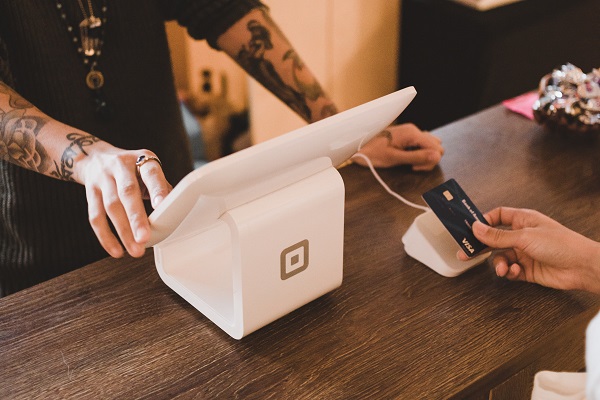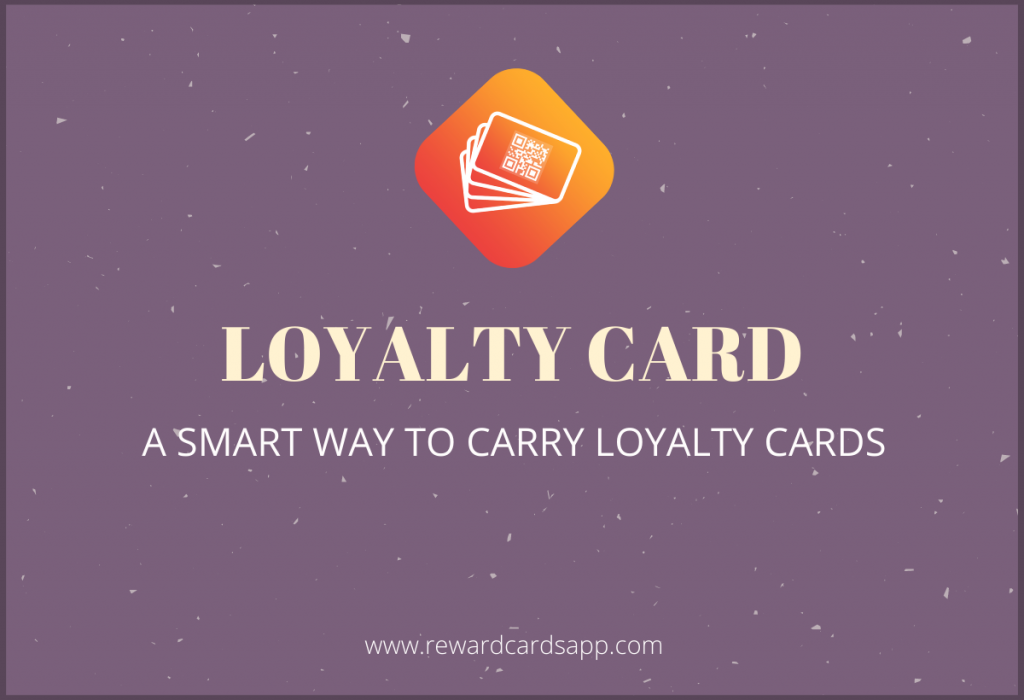What is a Loyalty Card?
What are loyalty cards and how do they work? A loyalty card programme is a type of incentive programme that allows a retailer to collect information on its consumers. In return for their active involvement in the programme, consumers are awarded discount codes, vouchers, points toward items, or some other loyalty reward. A loyalty card program’s additional purpose is to increase recurring business by giving participating consumers something which non-participating customers don’t get.
What are loyalty cards and how do they work? Loyalty cards are an excellent approach to increase client retention while also improving your brand’s general image.
Loyalty cards are frequently shaped like plastic credit cards, although they can also take the form of a keyring. A barcode or magnetic tape on a loyalty card is often detected at the point of purchase.
What are loyalty cards and how do they work? The card recognizes the customer and provides data to a database about the items they purchased. The database’s information is used to assist the shopkeeper in better understanding and influencing his consumers’ purchasing behaviour. Eighty-six per cent of American customers are registered in a loyalty network, according to research done by Boston University’s College of Communication; a majority of responses believed obtaining the card was worth giving up their personal information.
The second way of explaining
What is Customer Loyalty Cards?

Companies utilize loyalty program cards to encourage clients to back to their store for repeat purchases. Clients get a-holes punched in their loyalty card for every purchase they make when they receive it. The customer receives a special deal or discount after the business determines a certain number of holes. Customers are more likely to return to the organization in order to take advantage of the offer.
Consumer’s best loyalty cards are particularly advantageous to businesses since they only demand rewards when the consumer has spent a certain amount of money with the company.
There are three common types of these cards:
- Paper Punch Cards,
- Plastic Loyalty Cards,
- Digital Loyalty Wallets.
Consumer loyalty cards also provide insight into customer purchasing habits, allowing you to evaluate which rewards will be most appealing to your existing customers.
Retailers and organizations may better structure their marketing efforts by analysing these spending behaviours, while the client’s information is collected into a database that can be focused on future rebranding, retargeting, and greater customer retaining efforts. Those sloppy tiny cards stashed in people’s wallets, it turns out, aren’t as bad as we imagined.
In fact, they are proven to have a significant impact on people’s purchasing habits. However, the issue remains as to how these advertising jewels came to be.
Let’s have a look at what we’ve got.
Customer Loyalty Business Cards
You know, the hole-punch cards with the coffee-stained, frayed edges that folks use to get a free double-shot latte. There was a reason why they’re at every coffee house, restaurant, and bookshop.
Consumers are enticed to return to their store, cafe, or bookshop by offers of bargains and discounts for multiple transactions. And, because it costs 500% more to acquire a new client than it does to persuade an existing one to return to your store, your company should use loyalty cards as well.
The best part is that such crusty old punch cards have made their way into the digital realm and are now available as a digital app, never to be lost at home or ruined by time.
In this article, I’ll explain what a customer loyalty card is, how it was created, how it works, and a few notable examples of organisations that have effectively integrated customer loyalty cards into their marketing campaigns.
Let’s get started!
History Of Loyalty Card Programs

Customer loyalty cards have been there for a longer period of time than you would assume. In fact, the earliest of their sort is said to have existed as early as the late 1800s. During this time, American store owners and shopkeepers began handing out copper coins to their clients as a way of encouraging future purchases.
When we fast forward to the late 1800s, we can observe that this pattern hasn’t changed. The premise stayed the same, even when copper coins were substituted with less costly tokens such as printed stamps. Exclusive customer prizes were given out in exchange for consumer purchases.
From it, we got “box tops” in the early 1900s. Boxtops were similar to stamps, except instead of being distributed on little pieces of printed paper, they were printed on the product packaging.
Betty Crocker box tops are maybe the most well-known instance of box tops. These were printed on the box of her baking and cupcake mixes, which were made of cardboard. Consumers would buy a product, cut out the tokens, and send it in to receive discounts on associated items.
Certainly, it may appear dated by western standards, but it was really successful back then. Betty Crocker, in fact, established the foundation for many client loyalty programmes today. The globally acclaimed Frequent Fliers programme, probably the next most well enough and important rewards programme, came to us in 1981. This massively successful programme has since been renamed AAdvantage, and the customer rewards programme now has 67 million members.
What Are Customer Loyalty Cards Used For?

Customer loyalty cards, like any other customer loyalty programme, are designed to motivate repeat purchases, brand loyalty, and, probably most significantly, extra sales.
1. Customers Who Shop With You, Again and Again, Are Repeat Customers.
Consumer loyalty grows with each transaction consumers make from your company, boosting customer retention even more.
It’s true.
There is a 27% likelihood that a consumer will back to your business after making a purchase. By their next repeat purchase, this retention percentage has risen to 45%, and therefore by their third purchase, it has risen to a respectable 54%. Many business owners make use of easy-to-use loyalty cards to get their clients back.
2. It’s Simple To Sell To Repeat Customers
Specialists assume that their usual conversion rate is between 1-3 per cent, which, let’s face it, isn’t that impressive. An established customer, on the other hand, converts at a rate of 60 to 70%. It seems logical for a store owner to focus on the consumers who are most likely to convert, which is precisely what a customer loyalty card does.
3. Customers who return to your business spend more money
Customers who return are worth their weight in gold to your company. According to statistics, your most loyal 10% of clients spend three times more than the other 90%. And your top 1% of most loyal clients spend five times as much as the other 98%.
So the simplest victory for your company right now is to retain existing consumers and allow them to spend even more money on your goods or services.
Do Loyalty Cards Work?

Customer loyalty cards are effective, and the greatest thing is that they benefit all parties involved. In fact, 75% of consumers say they are more inclined to make repeat purchases with a company after obtaining a discount. You’ll not only encourage your consumers to spend more and more frequently, but you’ll also be awarding them with fantastic bargains from a brand they love.
In addition, loyalty cards are really convenient.
They streamline and simplify what may be a laborious procedure. It’s a lot simpler to swipe a plastic card than it is to mail cut-out coupons from product labels. Scanning a customer’s phone screen to collect points via a digital app or loyalty card wallet makes things even simpler.
Let’s go over why loyalty cards are valuable to your business, how they occasionally fall short, and how you can fix it.
Advantages And Disadvantages Of Loyalty Cards

There are many benefits, but there are also some negatives, as with any well-executed marketing campaign.
Advantages of Loyalty Cards
Loyalty Cards Increase Frequency Of Sales
Through unique offers, unique discounts, and appealing prizes, a loyalty card system promotes your consumers to return to your store very frequently. So the more they purchase with you, the more you’re likely to reward them. The best part is that you shouldn’t have to give much to reap the benefits. A modest discount, a member-only product, or that free double-shot coffee, which costs your firm nothing, is frequently enough to entice customers to return.
Reach And Exposure Of Your Brand Is Increased With Loyalty Cards
A loyalty card programme, which we’ve seen, is not only a terrific method to keep repeat business, but it’s also a very successful approach to attract new ones. The temptation of freebies and special offers is hard to ignore, particularly when it comes to something a consumer was planning to buy anyhow.
And if a consumer appreciates your loyalty programme (who doesn’t really like free items or special offers? ), they are more inclined to tell their friends and family about it. You’re increasing your brand’s exposure to new audiences you may have never touched previously by designing a programme worth boasting about. What are loyalty cards and how do they work?
Loyalty Cards Increase Product Awareness
Consumers can be encouraged for best rewards cards to try something new the next time they buy with you by using loyalty card programmes. This is especially effective for introducing consumers to a range of products you’ve recently introduced to your range or selling more of a higher-margin commodity that’s bringing in a significant amount of income for your company.
Disadvantages Of Loyalty Cards
Loyalty cards have numerous benefits for both the business and the customer. However, some customers believe loyalty cards infringe on their privacy or lead to intrusive and spammy marketing methods.
Now, let us just check a few of the drawbacks of loyalty cards.
Loyalty Cards Can Decrease POS Efficiency
Most consumers believe that creating a loyalty card will take some time. But, it can be aggravating once they have to dig through their pockets. This is not only aggravating to them, but it can also be aggravating to other customers who are waiting to be serviced.
The key point here is that making your tangible cards easy to recognise is an excellent method to counteract this. When creating them, use distinct and vivid colours, or make sure your brand’s identity is easily recognisable. When you’re using a digital loyalty card programme, ensure sure the app load faster and that the customer’s identity card number or membership number is visible.
Loyalty Cards Can Incite Privacy Concerns
Consumers must be willing to share some of their personally identifiable information in order to register for a loyalty card programme. Personal information isn’t worth giving up for what your company will give them in exchange for some customers.
A most terrifying thought is that your company will sell their data to third parties and that their information will be accidentally leaked. Provide them with some type of comfort, such as terms & conditions, to ease their concerns.
Loyalty Cards Can Become Spammy And Intrusive
Although it’s critical to stay in touch with clients so that your brand remains fresh in their thoughts, many firms have gone too far. Unnecessary or excessive communication, especially in the age of crowded unified messaging inboxes, can become stressful and even aggressive.
To ensure that your consumers aren’t feeling the same way, send out emails or messages on a regular basis, but on a less frequent frequency. When compared to every several days, an email sent once a month or once a week is unlikely to be annoying. Also, include relevant information in your communications so that customers feel it is worthwhile to open and read them.
For more information click here

